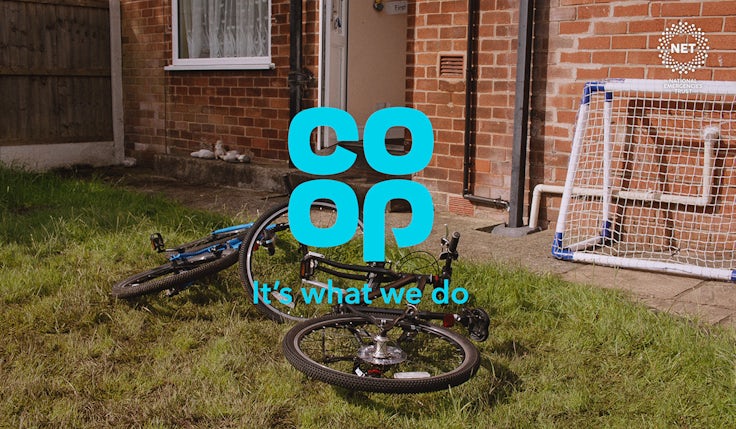‘It lost its way’: Co-op’s top marketer on doing a better job at highlighting membership
Speaking on a panel at Marketing Week’s Festival of Marketing, marketers from Manchester United and the Co-op examined the point of creativity.
 Creativity is seen as a point of differentiation, able to cut through even the hardest of obstacles to audience attention.
Creativity is seen as a point of differentiation, able to cut through even the hardest of obstacles to audience attention.
But thinking about what creativity means in a tangible sense for marketers, Kenyatte Nelson, chief membership and customer officer for the Co-op, said it is both an attitude that ties all aspects of the company together, by providing it with its key focus.
“We use creativity to knit all these, what seem to be disparate, parts of the business together,” he said, talking at Marketing Week’s Festival of Marketing today (5 October). “You can get a will and insure your dog and bury a family member and buy a sandwich. So it’s a strange old business. What really unifies it… [is the fact] it was the first cooperative business in the world. Creatively we try to anchor in on being a member-owned business.”
Speaking at an Oystercatchers-hosted session at Marketing Week’s Festival of Marketing, he also stated that the brand is less associated with being a member-owned business than it should be. Instead, he said, according to its research, the Co-op is most associated with high pricing. So he explained that while “we haven’t done a great job of that historically”, moving forward the company is focusing a lot of its consumer-facing marketing on highlighting its membership. “It’s lost its way a bit, but we’re coming back,” he added.
Ellie Norman, chief communications officer for Manchester United, noted that sports brands are also predicated upon a sense of membership and community. Consequently, she believes that ‘creativity’ for sports brands is in service of bringing people into the orbit of the brand.
Panel moderator Gill Huber asked whether sport provided new avenues for creativity. Noting that her former business, Formula 1, had lost its way for mass market appeal until rediscovering the value of storytelling, she said: “[First] fix the product, then ask how you put the excitement, the grit, the rawness back into a sport that had become overly clinical.”
She stated that Netflix’s ‘Drive to Survive’ was a boost for the sport, as it brought storytelling back into the equation: “Really understanding subcultures, [through] fashion collaborations, gaming… take away some of those barriers from that sport.”
Creativity-led solutions
Nelson agreed, adding: “The takeaway for me is [creativity] is about asking the right question and diagnosing the problem within the business, the barriers to entry… there will be reasons why customers/members are not engaging. It probably isn’t because they’re not aware of you… it’ll be because [they] haven’t been introduced in a way that resonates with [them].”
Luke Lloyd-Davies, group chief operating officer for Rocket Entertainment, agreed with the use of creativity to engender membership. He explained that, upon the occasion of marketing Elton John’s farewell tour there was a certain amount of scepticism given the cynical use of the term ‘farewell tour’ by other artists. In order to overcome that, the team used a creative approach to get fans to buy into the idea of the tour:
“We partnered with Google and did a livestream from London, LA and New York at the same time and it was all done in the medium of virtual reality. There’s layers you can add onto it… We have a Rocket Club so we want people to feel part of that journey.”
Norman pointed out that using creativity to establish the identity for the business has benefits when it comes to partnerships. She said: “It’s always painting that picture internally, but then also with partners. It is sitting down together, what problem are you solving, can you get to something that is really crystalised? It’s always going ‘how does this impact fans?’”
Ultimately, the panel noted that one of the best things a business can do is get out of the way of creatives during the inception phase of ideation. While it will always come down to a balance between the commercial strictures of the business and the drive to be creative, they each advocated for creative freedom to help determine the direction of the brand.






